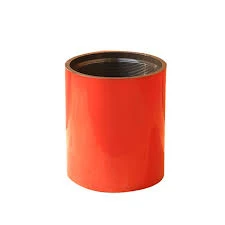- Afrikaans
- Albanian
- Amharic
- Arabic
- Armenian
- Azerbaijani
- Basque
- Belarusian
- Bengali
- Bosnian
- Bulgarian
- Catalan
- Cebuano
- Corsican
- Croatian
- Czech
- Danish
- Dutch
- English
- Esperanto
- Estonian
- Finnish
- French
- Frisian
- Galician
- Georgian
- German
- Greek
- Gujarati
- Haitian Creole
- hausa
- hawaiian
- Hebrew
- Hindi
- Miao
- Hungarian
- Icelandic
- igbo
- Indonesian
- irish
- Italian
- Japanese
- Javanese
- Kannada
- kazakh
- Khmer
- Rwandese
- Korean
- Kurdish
- Kyrgyz
- Lao
- Latin
- Latvian
- Lithuanian
- Luxembourgish
- Macedonian
- Malgashi
- Malay
- Malayalam
- Maltese
- Maori
- Marathi
- Mongolian
- Myanmar
- Nepali
- Norwegian
- Norwegian
- Occitan
- Pashto
- Persian
- Polish
- Portuguese
- Punjabi
- Romanian
- Russian
- Samoan
- Scottish Gaelic
- Serbian
- Sesotho
- Shona
- Sindhi
- Sinhala
- Slovak
- Slovenian
- Somali
- Spanish
- Sundanese
- Swahili
- Swedish
- Tagalog
- Tajik
- Tamil
- Tatar
- Telugu
- Thai
- Turkish
- Turkmen
- Ukrainian
- Urdu
- Uighur
- Uzbek
- Vietnamese
- Welsh
- Bantu
- Yiddish
- Yoruba
- Zulu
tubing crossover
Tubing Crossover Understanding Its Importance in Oil and Gas Industry
In the oil and gas industry, the term tubing crossover refers to a critical junction in the production tubing system, where different sizes or grades of tubing connect to each other. This component plays a vital role in enhancing the efficiency and safety of hydrocarbon extraction processes. As drilling technologies evolve, understanding the intricacies of tubing crossover has become increasingly important for field operators, engineers, and safety managers.
What is Tubing Crossover?
Tubing crossover is essential in situations where alterations in tubing size are necessary due to varying pressure conditions or changes in production requirements. For instance, in a well that transitions from lower-pressure zones to higher-pressure zones, a tubing crossover can facilitate the shift from smaller diameter tubing to a larger one. This transition is crucial not only for operational efficiency but also for ensuring the integrity of the wellbore.
Typically, tubing crossovers are designed with a standard connection on both sides, allowing for smooth and sealed transitions. Common materials used for tubing crossovers include carbon steel and stainless steel, selected for their resistance to corrosion and high-temperature endurance. Their design must also accommodate the anticipated pressures and fluid characteristics encountered within specific wells.
Importance of Tubing Crossover
1. Efficiency in Production The primary function of a tubing crossover is to ensure optimal flow rates of hydrocarbons from the reservoir to the surface. By providing a seamless transition between differing tubing diameters, crossovers minimize friction losses and maintain pressure integrity, which can significantly enhance production efficiency.
2. Safety Considerations A well-designed tubing crossover mitigates risks associated with pressure build-up and fluid leaks. Properly installed crossovers are critical for maintaining the safety of the entire production system. If a crossover fails, it can lead to catastrophic incidents, including blowouts, which pose serious risks to personnel and the environment.
tubing crossover

3. Adaptability to Changing Conditions Oil and gas production is not a static process; it often requires adaptation to changing geologic conditions, including pressure fluctuations and fluid characteristics. Tubing crossovers allow operators to modify the production setup as needed, ensuring that the system can handle various operational parameters efficiently.
4. Cost-Effectiveness Implementing tubing crossovers can lead to substantial cost savings in both drilling and operational phases. By avoiding the need to completely redesign tubing configurations, operators can reduce the time and resources spent on rework, thereby improving the overall economics of a project.
Conclusion
In summary, tubing crossover is a critical component in the oil and gas industry that facilitates the efficient and safe extraction of hydrocarbons. Its importance cannot be understated, as it directly impacts production efficiency, safety, and adaptability to changing operational conditions.
As the industry continues to embrace new technologies, such as horizontal drilling and deep-water exploration, the design and implementation of tubing crossovers will need to evolve. Engineers must consider various factors, including material properties, environmental conditions, and the specific requirements of each well, to ensure that crossovers can meet the demanding challenges of modern hydrocarbon extraction.
In the pursuit of maximizing efficiency while ensuring safety, the role of tubing crossovers will remain pivotal. This aspect of oil and gas production underscores the necessity for continued innovation, rigorous testing, and adherence to best practices in design and installation. As the energy landscape evolves, maintaining a focus on the importance of tubing crossover will help industry stakeholders navigate the challenges and opportunities that lie ahead.
Ultimately, understanding tubing crossover is key for anyone involved in the oil and gas sector, from field operators to engineers, as it plays a foundational role in the successful and safe extraction of valuable energy resources.
-
Tubing Pup Joints: Essential Components for Oil and Gas OperationsNewsJul.10,2025
-
Pup Joints: Essential Components for Reliable Drilling OperationsNewsJul.10,2025
-
Pipe Couplings: Connecting Your World EfficientlyNewsJul.10,2025
-
Mastering Oilfield Operations with Quality Tubing and CasingNewsJul.10,2025
-
High-Quality Casing Couplings for Every NeedNewsJul.10,2025
-
Boost Your Drilling Efficiency with Premium Crossover Tools & Seating NipplesNewsJul.10,2025







